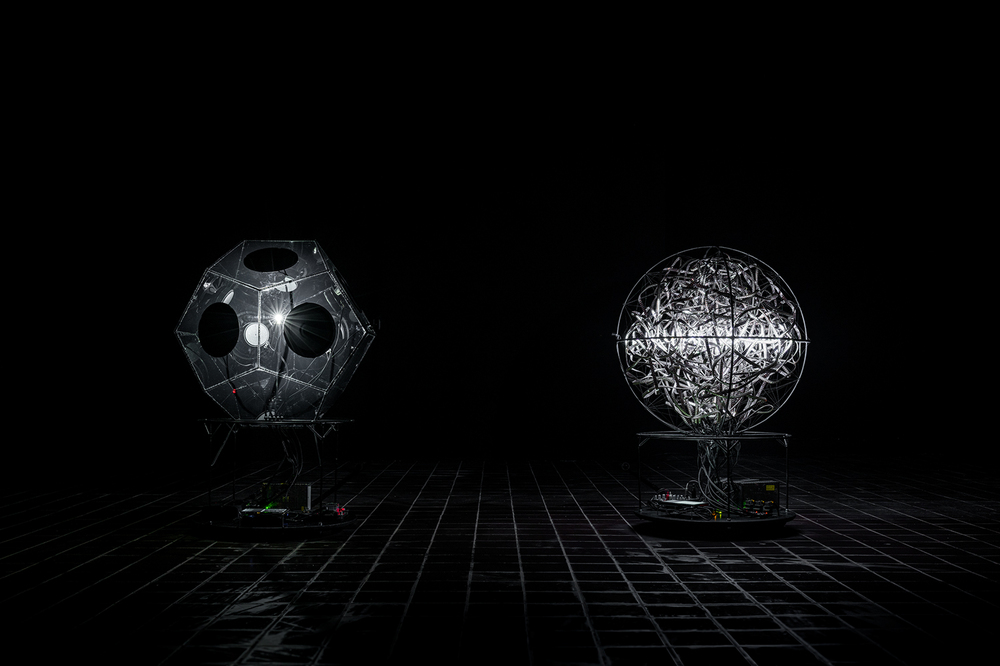
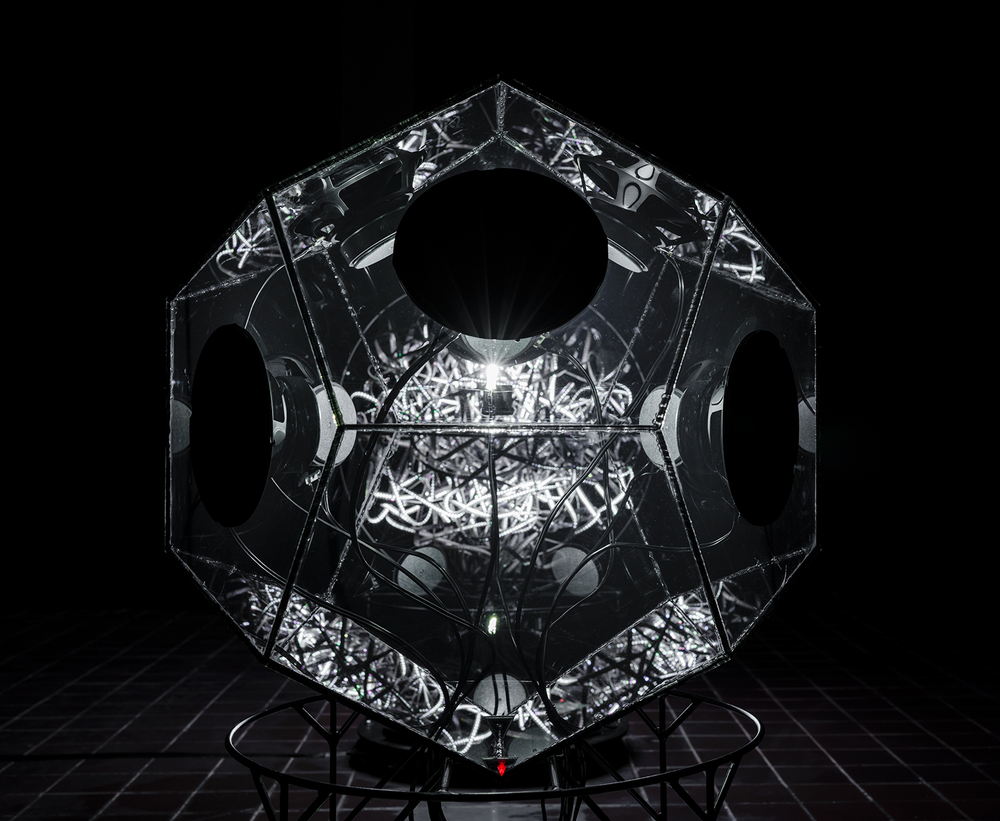
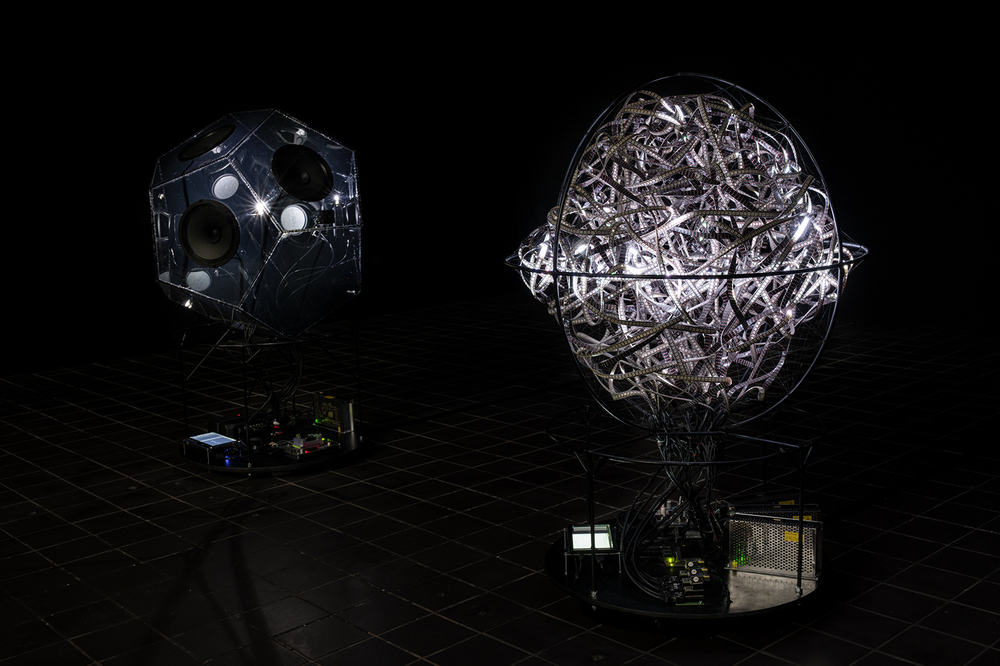
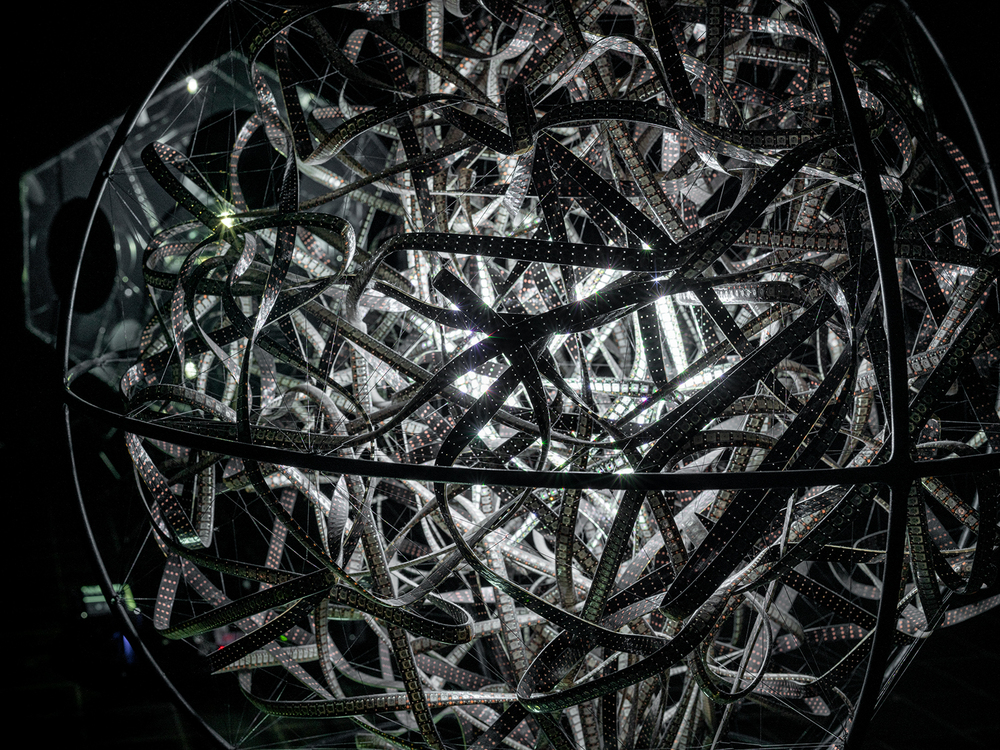
The latest work questions an AI’s capacity for empathy and purpose while communicating with a second AI. With conceptual support from the Center for Artificial Intelligence (University of Oviedo), Birk Schmithüsen set up two independent AI systems that can communicate with each other using an invented language of audiovisual associations. Both systems are embodied by a light or sound object and can receive the messages of the other. The spherical light object with a diameter of 80cm consists of a chaotic heap of 95m LED Stripe, a microphone and an embedded AI computing device. It can hear sounds and create images. The sound object in the form of a dodecahedron of black, opaque Plexiglas with the same diameter as the light object is equipped with eight speakers, a camera and the second AI system. It can see images and play sounds. In order to have a meaningful conversation, both objects produce an empathic behaviour by understanding the received messages and giving an intentional response.




Conceptual support by Artificial Intelligence Center, University of Oviedo at Gijon. 3D calibration of the volumetric display by Felix Bonowski. Coding by Marcus Ding.
Realized at LABoral Centro de Arte y Creacion Industrial in Spain within the framework of the European Media Art Platform EMARE program with support of the Creative Europe Culture Program of the European Union.
Additional production support by ArtesMobiles
FILE Festival, Centro Cultural FIESP, 2022, São Paulo (BR)
BioMedia (BioMimetic Media), ZKM, 2021/22, Karlsruhe (DE)
art+science Festival, CPN, 2021, Belgrade (RS)
new world dis/order, Werkleitz, 2021, Halle (DE)
LABoral, Centro de Arte y Creación Industrial, 2020/21, Gijon (ES)
Experimenta, Biennale Arts Science, 2020, Grenoble (FR)
re:publica Campus, 2020, Berlin (DE)
AI for Good, STATE Studio, 2020, Berlin (DE)
TEMPLE, Westflügel Lindenfels, 2020, Leipzig (DE)
Ars Electronica Festival, 2019, Linz (AT)
Chaos Communication Congress 36C3, 2019, Leipzig (DE)
In the first experiment the question of the nature of artificial intelligence in neural networks is investigated. They are credited with intelligent behavior because they can generalize learned rules and apply them to unknown data. I describe the reaction to unknown data as predictable unpredictability. In the experiment, the training process of an artificial neural network as well as the predictable unpredictability are audiovisually translated and intuitively experienced. Sounds are used as input data associated with images as output data. A spherical object makes the sound-image associations visible.
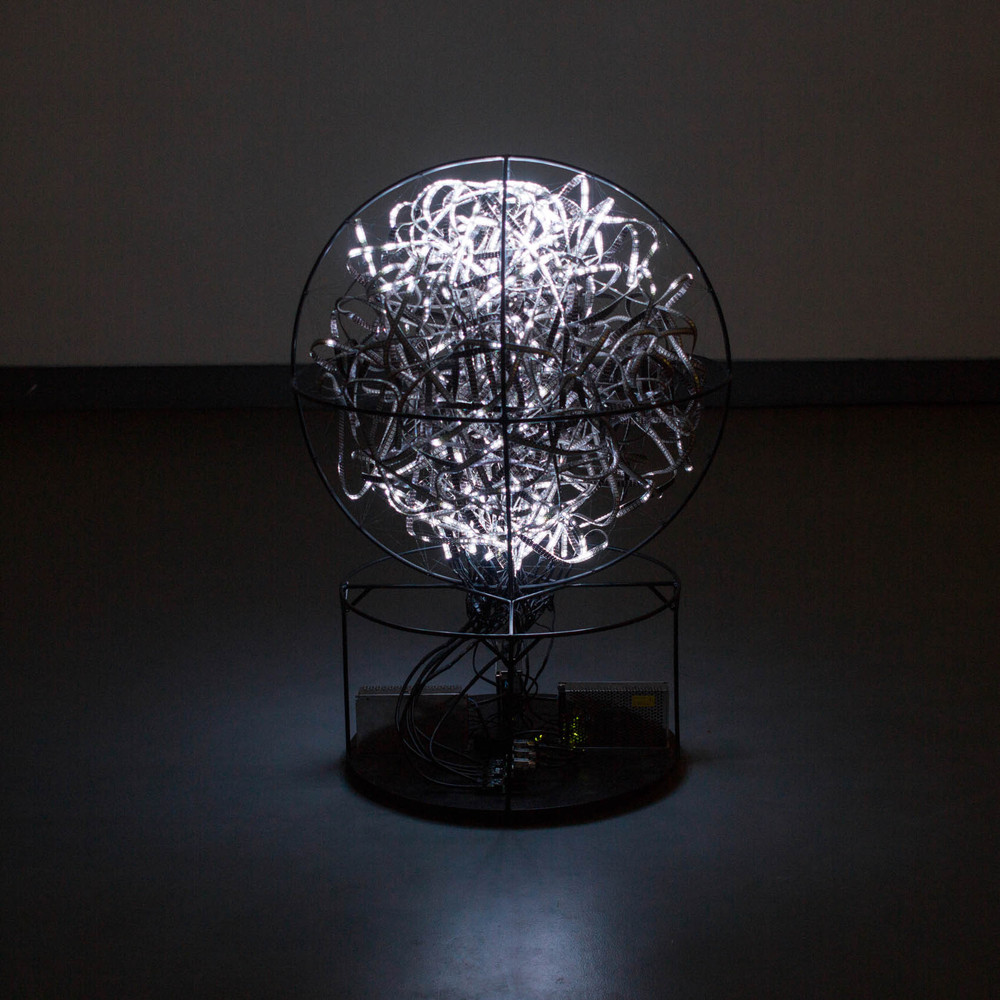
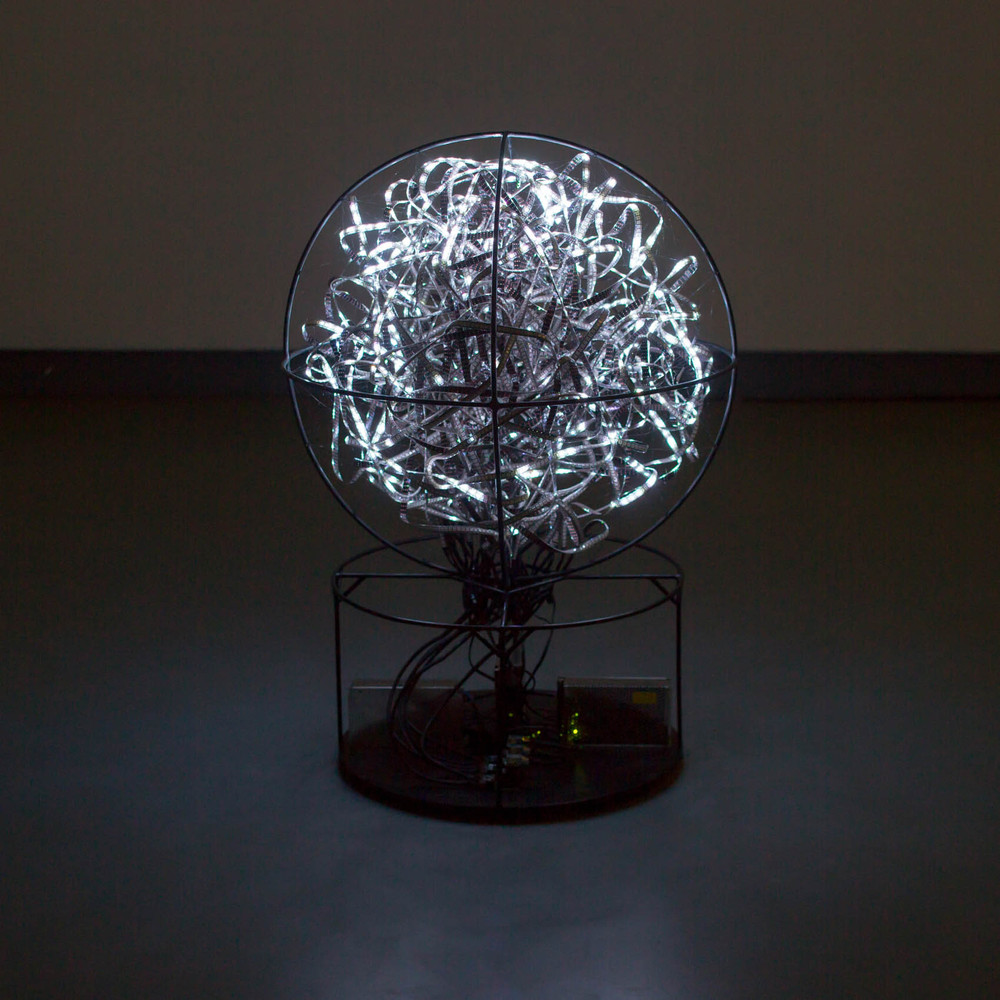
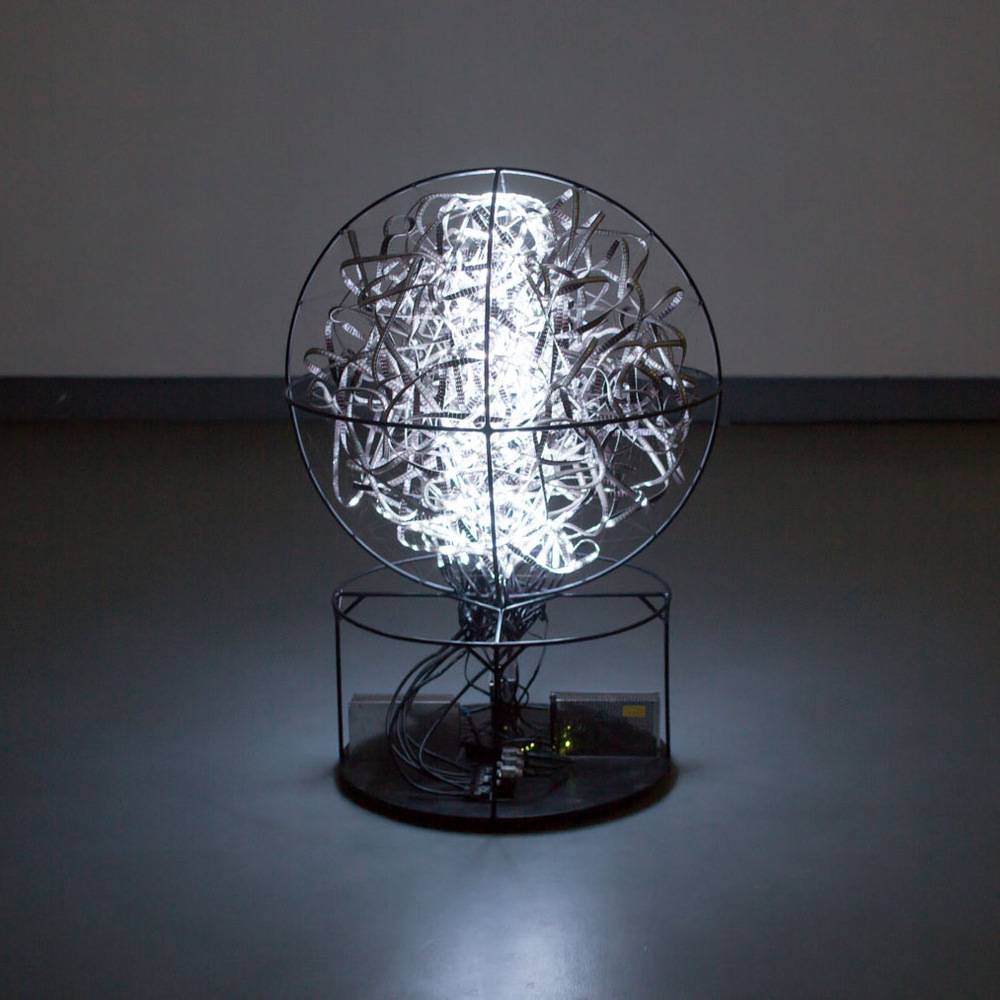
The object consists of a seemingly chaotic cluster of thirteen thousand LEDs in which readable patterns of light appear. Each LED is connected to an output neuron of the neural network and represent its state by its brightness. The LEDs are mapped in three-dimensional space. Training data are generated from classifications of sounds to three-dimensional shapes, and the state of the neural network is represented as a readable pattern of light.
Festival für selbstgebaute Musik, Haus d. Statistik, 2020, Berlin (DE)
Chaos Communication Camp, 2019, Mildenberg (DE)
Tag der offenen Ateliers, 2019, Leipzig (DE)
is the light object used in the SpeculativeAI series. It is probably the world's first volumetric display made of a chaotic array of LEDs.
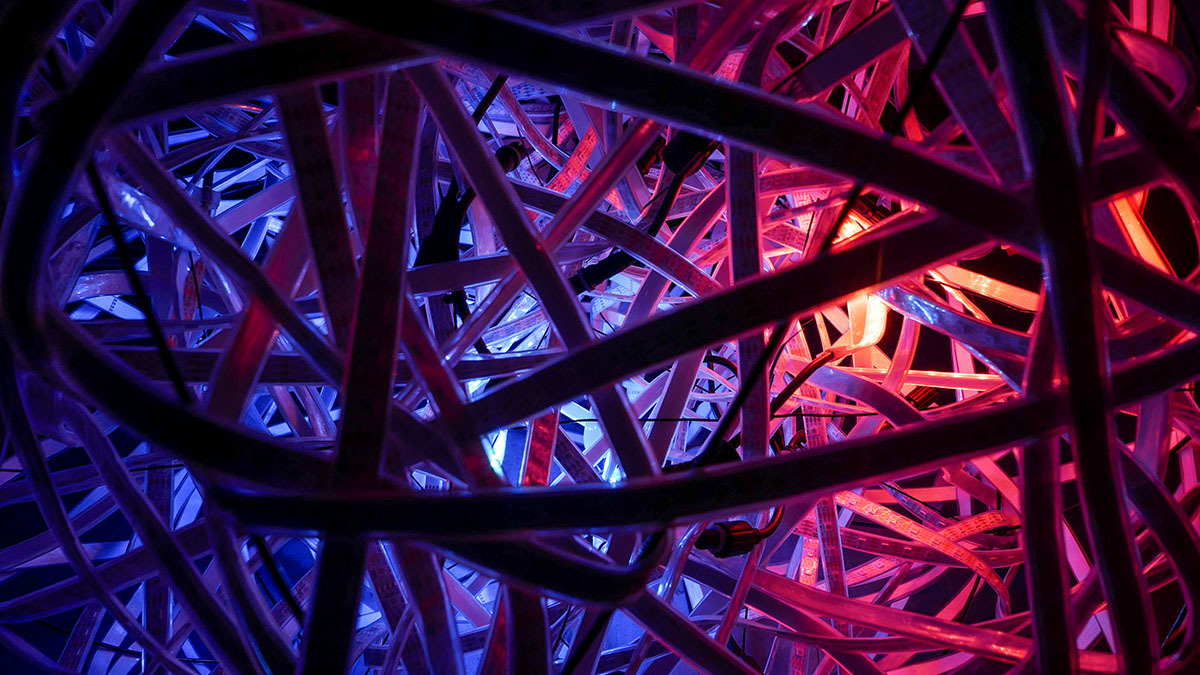
160m pixel LED strips are arranged organically to form a spherical object which is spaced wide enough to see through, so that every dimension of the sphere stays visible from all angles.
The installation has 9.600 randomly assembled pixels that are mapped in the three-dimensional space and are individually controllable. Because of the spatial representation of the pixels in virtual space, it is possible to form three- dimensional shapes, patterns and structures out of the chaotic cluster: an apparent intelligence that reveals itself within the seemingly random formation.
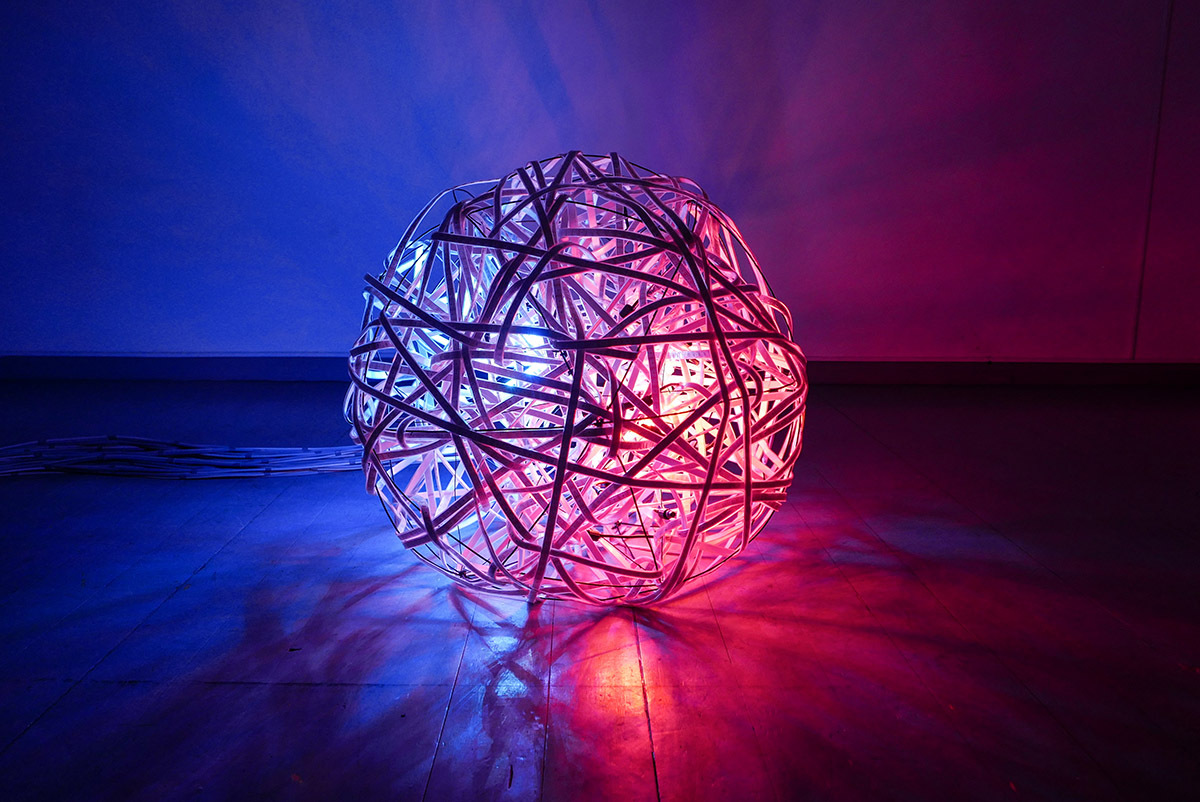
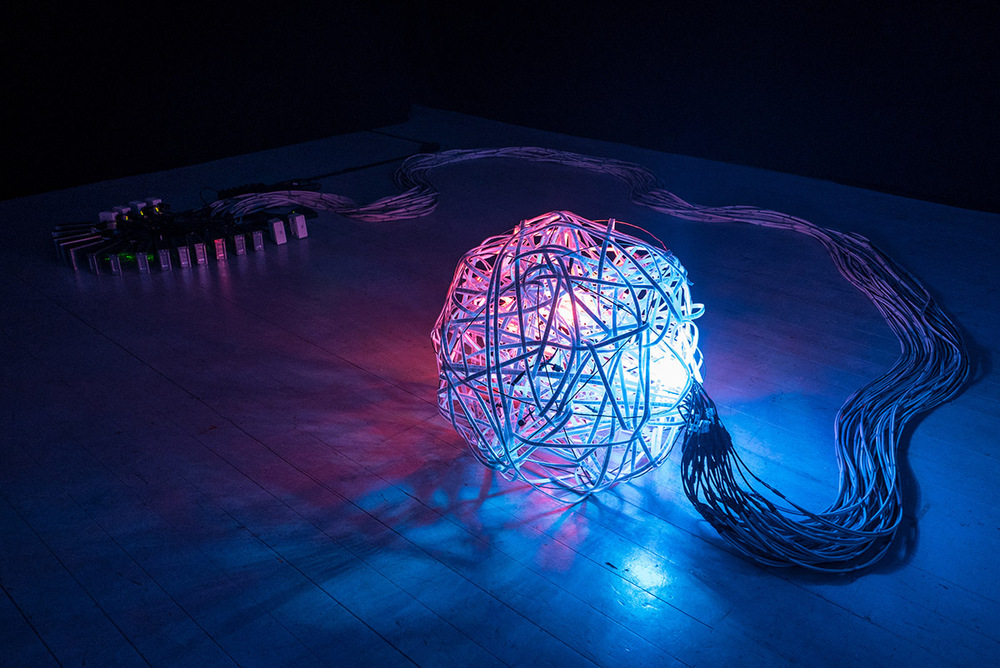


Inside the sphere, two light entities are dancing with each other, following a score: Each entity tries to get as much distance as possible to the other one and to the wall. The decision about the sphere‘s movements are calculated by a genetic algorithm.
Pixel calibration realized by Felix Bonowski